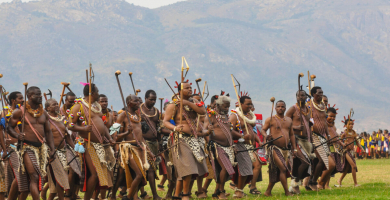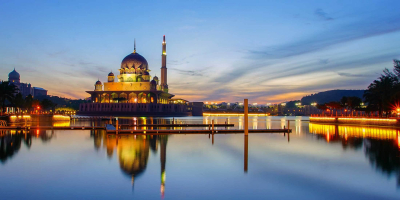Top 7 Ecuador Culture, Customs and Etiquette
Ecuador's distinct culture is as vivid and beautiful as the hand-woven tapestries of local artisans. Drawing from its long and rich history, Ecuadorian culture ... read more...includes a fair mix of indigenous practices along with European colonial influences. Almost everyone in Ecuador has a multiracial background, which leads to enormous cultural diversity as well as unique customs and traditions across the country. The article has summarized the cultural highlights in Ecuador and provided you with more useful information about this country.
-
The predominant religion is Roman Catholicism, but other Christian faiths are represented. Indigenous Ecuadorians, on the other hand, have combined Catholicism with their traditional beliefs. The near synonymous association of Pacha Mama (Mother Earth) and the Virgin Mary is one example. Holidays such as Christmas and Easter are especially interesting times to visit Ecuador. However, because religion is free in Ecuador, there are small populations of other Christian groups such as Adventists, Mormons, and Evangelicals, as well as an extremely small but present Jewish population and a scattering of other religions.
Musical celebrations, long processions and walks, and a variety of other entertaining displays are frequently included in customs. Novenas are a common practice in the Latin Catholic church in which the community organizes walks or services for the nine days preceding a holy day in pious preparation and prayer. Christmas: In preparation for Christmas, live nativities and Christmas pageants are common sights during the Advent season. On Christmas Eve, many communities will stage the Posadas, a reenactment of Mary and Joseph's search for a place to stay in Bethlehem. Another custom is to toast with eggnog liquor rompope and share a ham or turkey dinner with family.
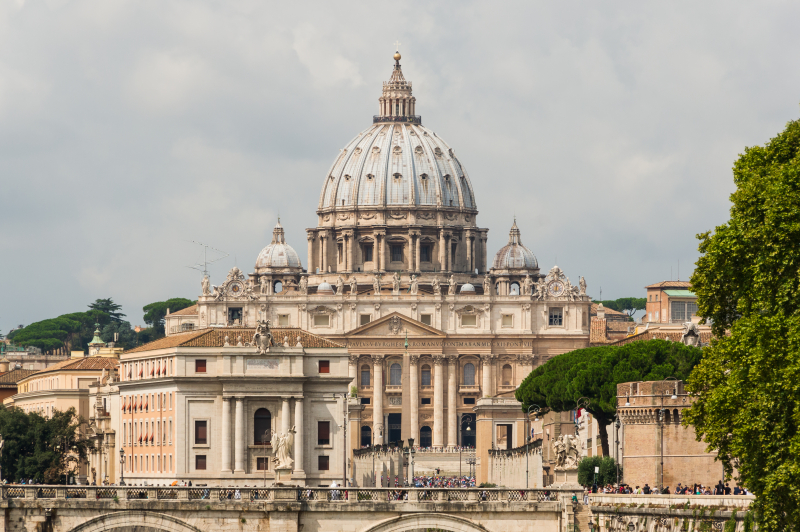
learnreligions.com 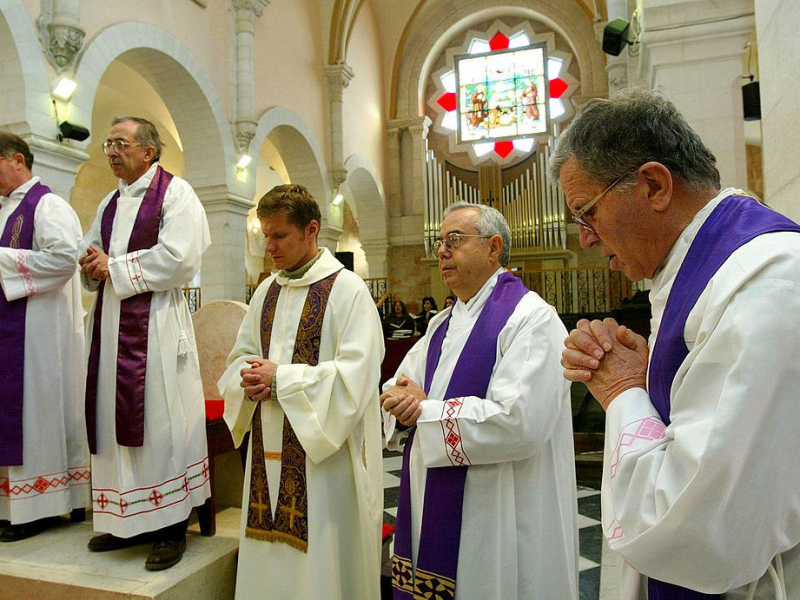
en.wikipedia.org -
Although there are dialectal differences between Sierra and Costa Spanish, which has been influenced by Quichua, Spanish is Ecuador's official language of business and government. The indigenous people of Peru speak Quichua and Shuar (both official intercultural languages), as well as other ancestral languages. Ecuador has over ten indigenous languages, many of which will likely survive as mother tongues. The majority of indigenous males are bilingual, and women are becoming more so as well. Bilingualism and bilingual or bicultural education are becoming increasingly important concepts. When bargaining in rural markets, a few Quechua words will not only endear you to the vendors, but will almost always result in an extra orange or more juice! A number of small lowland groups have their own languages. English is understood in the best hotels, airline offices, and travel agencies, but it is useless elsewhere.
Quichua, a local variant of Quechua, is the second most widely spoken language (5%), followed by Shuar (1%); both are used for communication among speakers of different languages. Chimborazo Province has the highest concentration of Quichua speakers. Quichua is also included in the national curriculum. Shuar is a Jivaroan language that is spoken by approximately 35,000 people. Shuar speakers are concentrated in the provinces of Morona Santiago and Pastaza in southeastern Ecuador. Eleven additional Indigenous languages are spoken. These are the first languages of approximately 28,000 Ecuadorians, the majority of whom live in northern Ecuador. The majority of people in the country's urban areas, particularly along the coast, are monolingual and only speak Spanish. Indigenous languages are spoken more frequently in rural areas.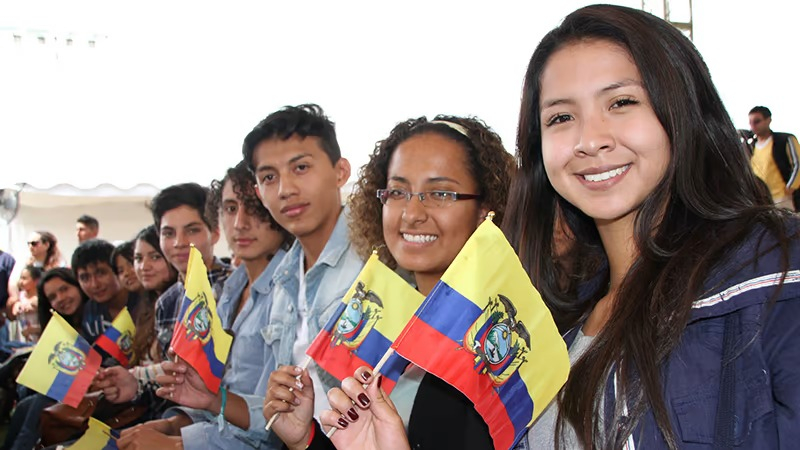
ecuador.com 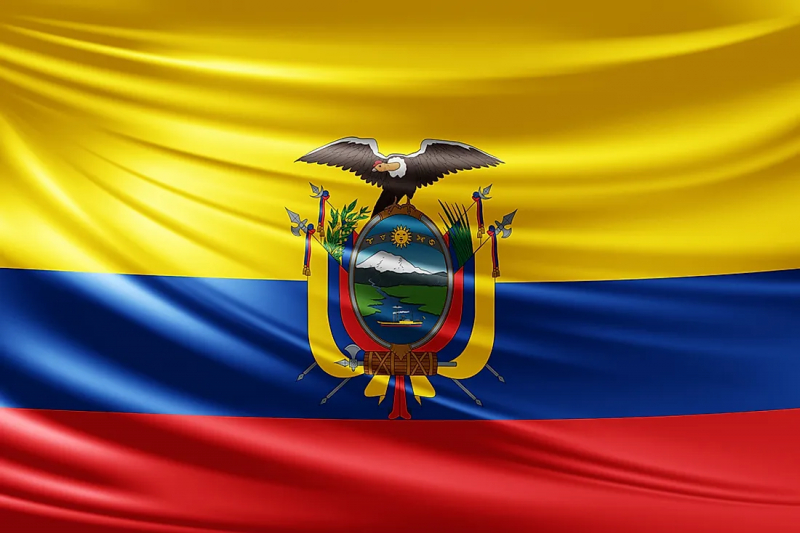
ecuador.com -
Indigenous groups produced a variety of ceramics, sculptures, and paintings prior to the arrival of the Spanish. In fact, pottery dating back to 3,000 B.C. has been discovered in the Ecuadorian village of Valdivia. When the Spaniards arrived, the emphasis shifted to religious subjects. Although the Virgin Mary and Catholic saints were popular subjects, indigenous influences were evident in the work of some artists, including Manuel Chili (better known as Caspicara) and Gaspar Sangurima. Many museums in Ecuador have colonial paintings on display.
The Quito School rose to prominence in the 17th and 18th centuries as a result of an artistic style that favored extreme depictions of Catholic motifs. Following Ecuador's independence, however, a more secular approach predominated, with paintings focusing on natural landscapes, social elite, commoners, and revolution heroes. The indigenous population of Ecuador is a prominent theme in the work of many contemporary artists. This includes Oswaldo Guayasamn, Ecuador's most famous modern artist, whose paintings frequently depict distorted, suffering indigenous figures. Because of his Cubist influences, Guayasamn has been dubbed the "Americanista Picasso" by some.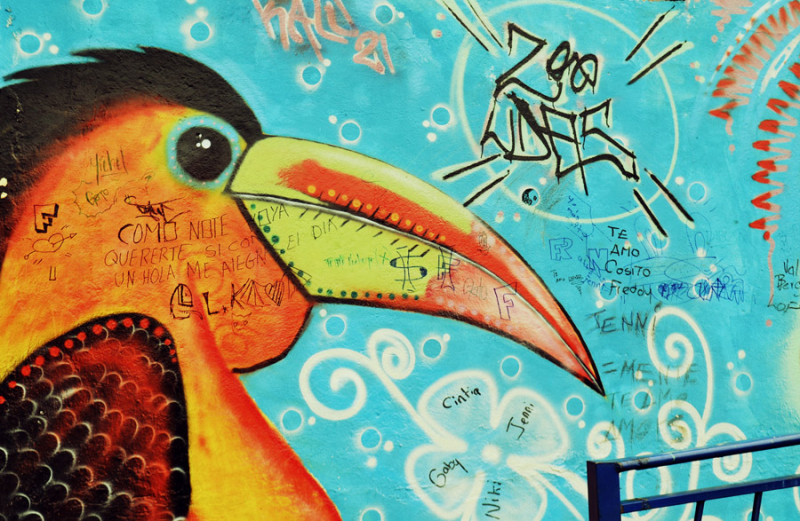
matadornetwork.com 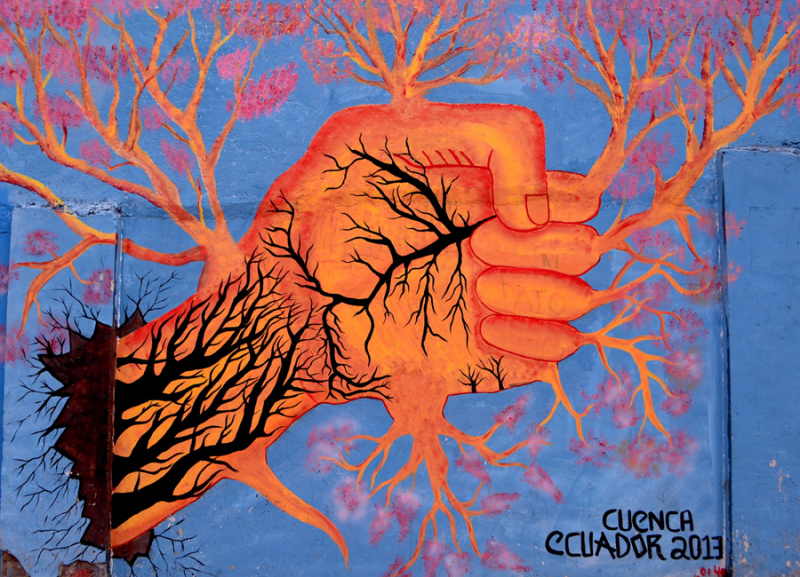
matadornetwork.com -
Soccer and dancing are two of the most popular activities in Ecuador. The entire country rallies behind the "Tricolor" or "La Seleccion" (Ecuador's national team), and the major soccer clubs of Emelec, Barcelona, and La Liga de Quito compete fiercely. When not watching soccer, many people enjoy playing it wherever they can, whether on a grass field, a concrete court, or even in the street with friends. Tennis and volleyball are two other popular sports in Ecuador.
'Futbol' (soccer) is a religion in Ecuador. Each town has its own football team, and some cities have multiple teams. Season tickets range in price depending on how close you are to the field, but for most games, a ticket can be purchased at the gate on game day. The crowd goes crazy as the competition heats up. If Ecuador makes it to the FIFA World Cup finals, don't expect to find a taxi driver anywhere in the country during the game'they'll all be watching the game.
For over 75 years, Ecuadorians have enjoyed Ecuavoley, a relaxed version of volleyball played by teams of only three people on each side. It is not a professional sport, but it is played all over the country by both professional and amateur athletes, with family members cheering from the sidelines. There are no uniforms or organized teams, but it is just as popular as soccer because anyone can play it anywhere there is a volleyball net.
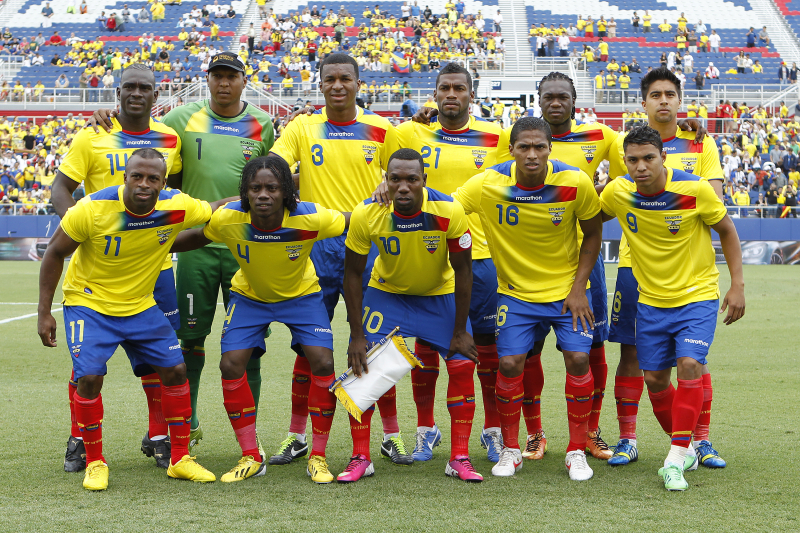
theguardian.com 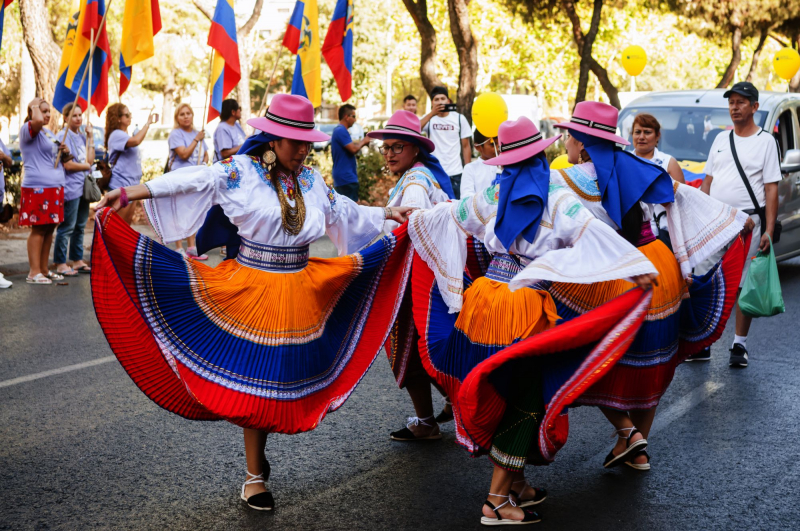
madridiario.es -
New Year's Eve: Just a week after Christmas, this is another major holiday in Ecuador, complete with a turkey or ham dinner, a toast to the old year with wine or sangria, and the consumption of 12 grapes for good luck in the coming months. Setting off fireworks and burning "Monigote" papier-mache figures that can range from one meter to an impressive 5 meters at the stroke of midnight on New Year's Eve is a fun tradition.
Carnaval, Lent, and Easter: Although Ecuador's traditions do not compare to those of Brazil's Carnaval (Mardi Gras), they are enjoyable. There is a national holiday two days before Ash Wednesday and the start of the Lenten season during which people "play Carnaval," which means chasing each other with water balloons, powdered paint, and spray foam. When Lent begins, a solemn mood of reflection and penitence pervades Ecuador in preparation for Good Friday. If you are fortunate enough to be in Ecuador during Holy Week, you may encounter a Via Crucis, or "Way of the Cross."
Day of the Dead (Dia de los Muertos): As in many Hispanic countries, the Day of the Dead (Dia de los Muertos) allows people to pay tribute to deceased family members. This is usually followed by family visits to the cemetery to light candles or lay flowers on their loved ones' graves, and then by large celebrations, parades, and community parties.
Independence Day: On May 24, 1822, the combined forces of Simon Bolivar, San Martin, and Antonio Jose de Sucre successfully defeated the Spanish army at the famed Battle of Pichincha in the Ecuadorian Andes.
Beauty Pageants: In many South American countries, especially Colombia and Ecuador, beauty pageants are a fun way for communities to come together and help support and empower teenage girls as leaders in their towns.
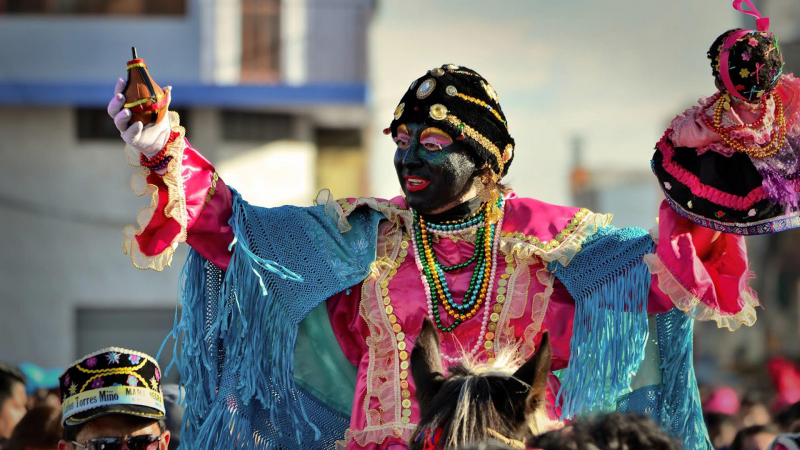
naturegalapagos.com 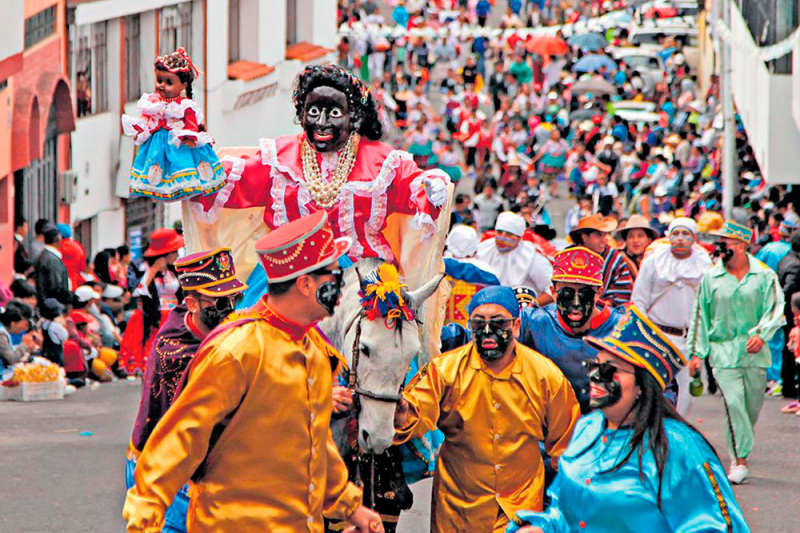
naturegalapagos.com -
The typical cuisine varies depending on where you are on the mainland, as there are three distinct regions: the coast, the highlands, and the rainforest. Soups and stews, corn pancakes, rice, eggs, and vegetables dominate Ecuadorian cuisine. Even in the highlands, the seafood is excellent. Ceviche, which is seafood prepared in lemon juice; lechón, which is suckling pig; and cuy, which is whole roasted guinea pig—however, some delicacies may only be for the most adventurous stomachs!
Rice is a staple of the diet everywhere you go, and soups and stews are very popular. Tubers, such as potatoes and yuca, are also important components of Ecuadorian cuisine, and plantains are commonly served alongside most dishes. Trout and cuy (guinea pig) are popular highland delicacies. The coastal region is well-known for its delectable seafood, particularly ceviche (typically shrimp or other shellfish prepared in lime juice with onions, tomatoes, and cilantro and served with popcorn or fried plantain chips). Another popular dish is encebollado, a fish soup that has become a national dish. Chicken, beef, and pork are also served in a variety of rich sauces and marinades.
Because of the fertile soils and the humid tropical climate of the coast, Ecuador also produces a stunning variety of fruits and vegetables, most notably bananas (known in Ecuador as “guineos”), melons, and other exotic fruits like guava, passion fruit, soursop, star fruit, and achotillo, just to name a few.
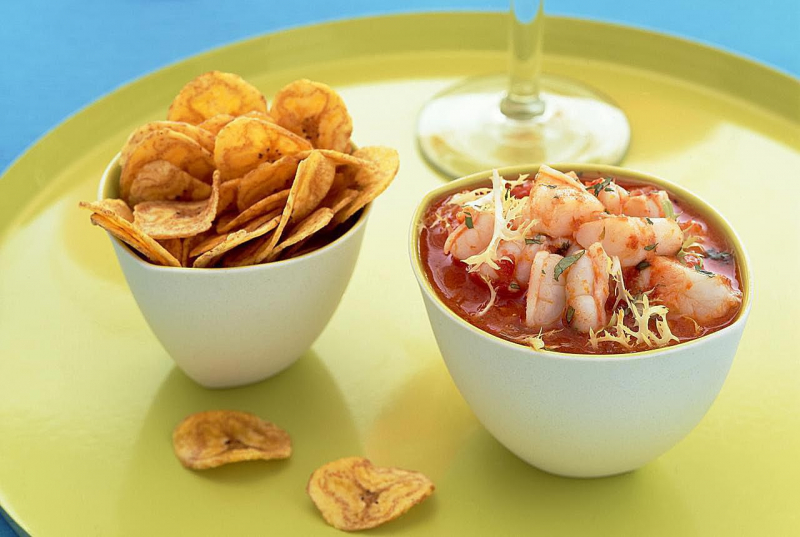
wanderbusecuador.com 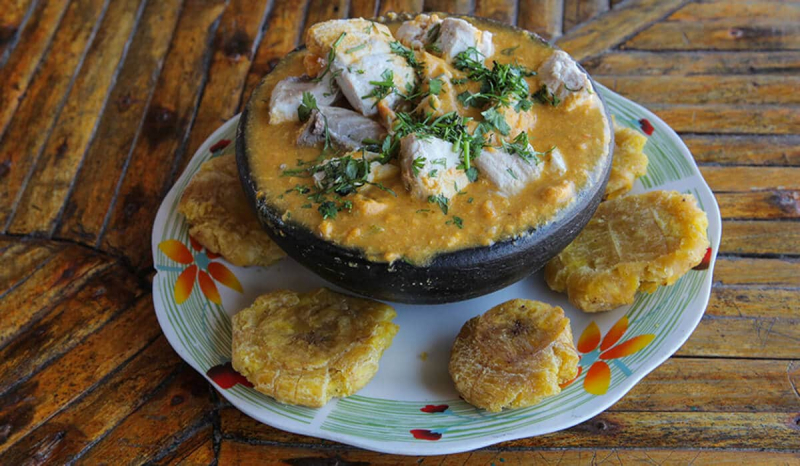
thespruceeats.com -
The Inca were pivotal in the development of Ecuador's original music, providing instruments and melodies that are still used in Andean music today. One of the most important instruments is the flute, which was considered holy. Melodies are typically played on panpipes such as the zampoa and a vertical flute known as the quena, while beats are kept steady on bass drums made of clay or hollow logs.
When the Spaniards arrived, they brought their instruments with them, including mandolins, clarinets, violins, and brass instruments. The charango, a 10-stringed relative of the lute, is a particularly intriguing instrument. The six-string guitarra and 15-string bandolina are two other stringed instruments. Many of these instruments are still in use today, particularly in the Andes, where you might encounter solo singers or brass bands in one of Quito's bars. Electronic instruments have also introduced modern influences into Ecuadorian music.
The music of the Ecuadorian coast is distinct, influenced by African rhythms and traditions. This is especially true along the northern coast near the Ro Chota valley. You're likely to hear cumbia music (originating in Colombia) and see marimbas used for percussion and melody. Don't be afraid to dance if you come across some of this music! Holidays and festivals are another opportunity to give into the rhythm and get swept up in the joy of the crowd.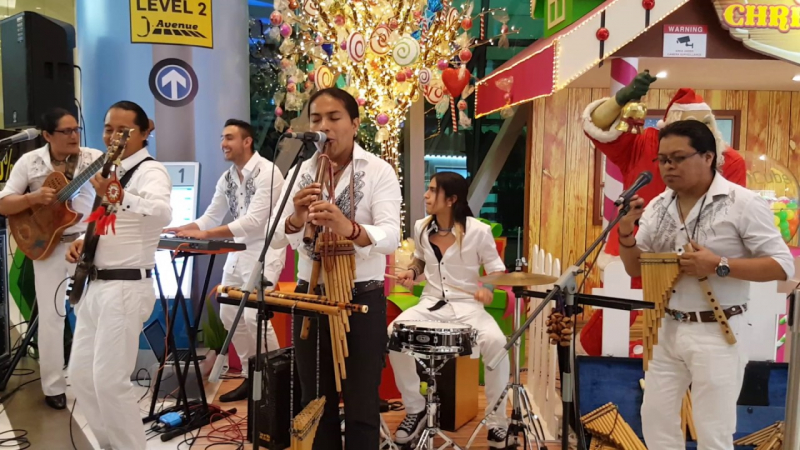
anywhere.com 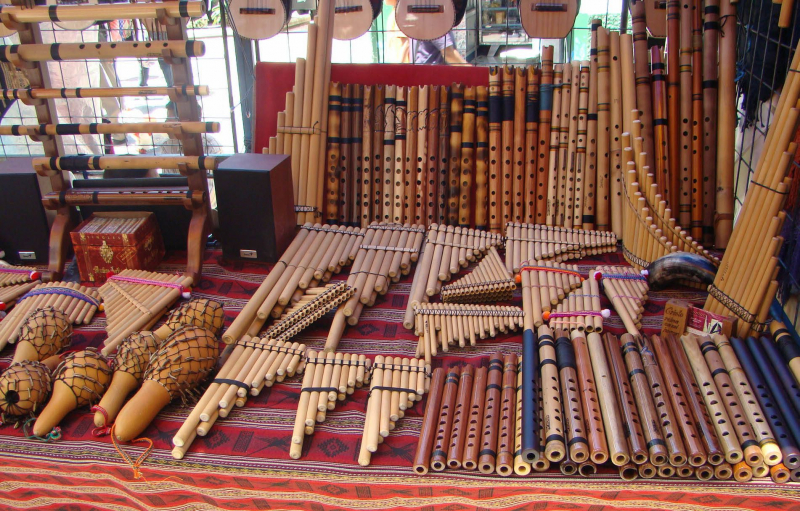
anywhere.com



























